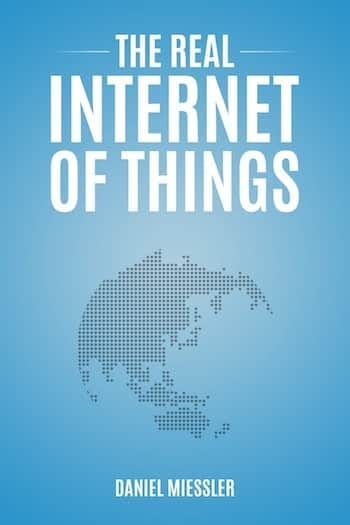The Real Internet of Things: Desired Outcome Management

These are published chapters from my book The real Internet of Things, published on January 1st, 2017.
Now that we’ve talked about the infrastructure for collecting, analyzing, and presenting information, we can move on to a concept I call Desired Outcome Management (DOM).
The assumption underpinning DOM is the simple claim that we want to improve things but we don’t know exactly how to go about it.
DOM provides a model for improving almost anything, and data plays one of the central roles.
DOM is broken into a few main components:
Define your goals. This could be for a business, a city, a family, a department, a country, a team, or an individual. Examples are things like: graduate from a top-10 university, make 100K/year, reach the top 10 ranking in quality of life, attain 150K in passive income, have a happy and fulfilled family, etc.
Define your model. A model in this case is a method or approach for attaining a goal or set of goals. For example, if you want to live a fulfilled life, there might be a Tony Robbins model, or a Dr. Phil model, or a model you make for yourself. It’ll have statements in it like, "You need to be healthy to be happy. You need to exercise. You need to eat plenty of raw foods, etc."
Capture data. From there, you need to capture data about your entity’s behavior, from the real world, and get it into the system. So if you have a model that talks about diet, you need inputs regarding what you eat, how much you exercise, etc. If your model cares about grades in school, you need to get those grades into the system.
Provide Ratings. Next your system needs to provide clear ratings on how you’re doing in the various areas you’ve chosen to monitor. I prefer A through F, but you can use anything you want as long as it’s both clear and simple. Ratings will also include a composite, overall score for your progress vs. your goals.
Provide Recommendations. Finally, the system tells you exactly what to do to improve your ratings in the various areas and overall. So if you’re tracking health, for example, and you have a C in activity because you’ve been sedentary, the system will tell you what to do to improve it. It’ll give clear and prescriptive advice, such as, "Row 500 meters, do one set of push-ups, and one set of sit-ups every morning." If you’re working on building a great team, the advice after a bad rating might be, "Have more frequent team meetings, and focus on building trust through reduced competitive focus."
Adjustment. The last component of the system is the means by which the model can be updated. Updates to the system come in the form of modifications to the model. This can be addition, subtraction, or changes in importance for elements under consideration. For example, if you’re tracking a family’s health and happiness, a new study could come out that says shared laughter is crucial to individual happiness. This will be incorporated into the model and recommendations accordingly, based on the research. Similar adjustments will also be made to the model as new information about the world is made available to us.
The adjustment phase is where algorithms will be so crucial. Using machine learning, evolutionary algorithms, and still-undiscovered AI techniques we will continue to extract increasingly valuable insights from the data we have. And because of our access to realtime data through Universal Daemonization, the data being fed into these models will be continuous and fluid.
DOM is just a methodology—a name for a simple yet powerful concept.
Have goals
Have an approach to achieving them
Bring in data about the world
Rate how you’re doing
Recommend changes based on where you could improve
Adjust the approach based on new data
(optional and/or occasional) Ensure that your goals have not changed
This is a framework for using technology, data, and science to steward humanity’s progress forward.
Summary
It’s one thing to be able to capture data in realtime, move it around, and analyze it.
It’s quite another to be able to use that data to power your models for improving outcomes.
That’s what frameworks similar to DOM, realtime data, and machine learning and evolutionary algorithms will help us accomplish.